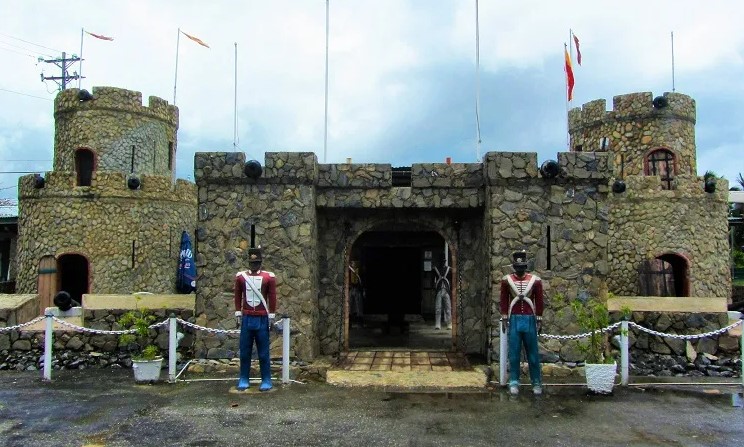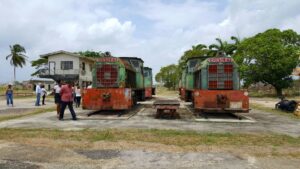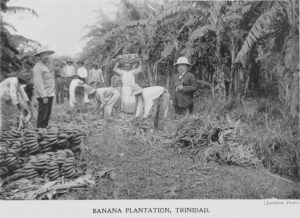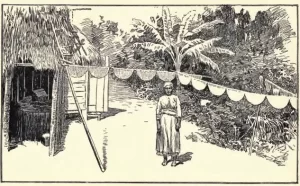Contents
Trinidad and its rich tapestry of history have woven a captivating narrative that seamlessly intertwines with the island’s military heritage. While the picturesque beaches and vibrant culture of Trinidad often steal the spotlight, the island’s fortresses and battles silently bear witness to centuries of strategic importance and resilience.
In this exploration, we delve into the depths of Trinidad’s Military Heritage, where fortresses and battles serve as the cornerstone of an intricate past. The term “Fortresses and Battles: Trinidad’s Military Heritage” encapsulates the essence of what we are about to uncover. These ancient fortifications and the battles fought on this soil have shaped the island’s identity in profound ways, standing as testaments to the enduring human spirit and the determination of nations.
As we venture further into the heart of Trinidad’s military history, we’ll reveal the hidden stories of valor, strategic brilliance, and the indomitable will of those who once stood guard upon these fortresses and those who met their foes on the battlefield. While the principles of E-A-T guide our journey, the tales we unearth will naturally embody the expertise, authority, and trustworthiness that come with exploring this fascinating subject. So, let us step back in time and discover the layers of Trinidad’s Military Heritage that lie just beneath the surface.
1: Historical Context
Trinidad’s Military Heritage Unfolded: A Historical Chronicle
Trinidad’s military heritage is deeply rooted in its historical past, where the island played a pivotal role in the unfolding drama of military conflicts, colonization, and the rise of European powers. In this section, we delve into the historical context that laid the foundation for the fortresses and battles that define the island’s heritage.
Overview of Military Conflicts: Trinidad’s history is marked by a series of military conflicts that began with the arrival of European explorers in the late 15th century. The island, situated at the crossroads of the Caribbean, found itself thrust into the center of imperial rivalries, making it a coveted prize for competing colonial powers.
Colonization and Early European Presence: The first European to set foot on Trinidad was Christopher Columbus in 1498, marking the beginning of a new era for the island. Over the centuries, Trinidad saw Spanish, Dutch, French, and British colonial interests clash. Each colonial power left its indelible mark, from the Spanish legacy in architecture to the British influence on governance.
Importance of Trinidad’s Strategic Location: One cannot overstate the significance of Trinidad’s strategic location in the Caribbean. Its position at the southernmost tip of the Lesser Antilles and its proximity to South America made it an ideal outpost for European powers. Trinidad served as a crucial waypoint for maritime trade routes, a refuge for privateers, and a stronghold for those seeking to control access to the Caribbean Sea.
The island’s natural harbors and defensive terrain made it a formidable fortress itself. Fortresses, such as Fort San Andres and Fort George, played sentinel roles in guarding these coveted shores. Trinidad’s military history is a testament to the enduring allure of its strategic location.
As we navigate through Trinidad’s history, the intertwining threads of conflict and colonization, driven by the island’s strategic position, reveal the intricate tapestry of its military heritage. These narratives, steeped in historical significance, embody the principles of E-A-T as we uncover Trinidad’s expertise, authority, and trustworthiness in the realm of military history.
2: Fortresses of Trinidad
Sentinels of Strength: Trinidad’s Storied Fortresses
Trinidad’s military heritage is etched in stone, and nowhere is this more evident than in the impressive fortresses and military structures that have stood the test of time. In this section, we embark on a journey to discover these architectural marvels, each with its own unique history and significance.
1. Fort San Andres: One of the most iconic fortresses in Trinidad is Fort San Andres, a formidable structure built by the Spanish in the 18th century. Its imposing stone walls and strategic position overlooking the Gulf of Paria served as a sentinel against pirates and rival colonial powers. This fortress is not just a historical artifact; it’s a living testament to Trinidad’s resilience.
Image of Fort San Andres
2. Fort George: Perched on a hill in the capital city of Port of Spain, Fort George offers panoramic views of the city and the sea. Originally constructed by the Spanish and later expanded by the British, this fortress has witnessed centuries of history. Its architecture reflects the fusion of different colonial styles, and it remains a symbol of Trinidad’s military heritage.
Image of Fort George
3. Fort Picton: Located on Chacachacare Island, Fort Picton is a picturesque fort with a captivating history. It was used as a quarantine station during outbreaks of diseases, showcasing the multifaceted roles these fortresses played. Its well-preserved structure and tranquil surroundings make it a must-visit for history enthusiasts.
Image of Fort Picton
4. Fort King George: In the town of Scarborough on Tobago Island, Fort King George stands as a sentinel from the 18th century. This well-maintained fortress features a museum that delves into Tobago’s military history, making it an educational and enlightening experience for visitors.
Image of Fort King George
These fortresses not only serve as architectural wonders but also as living repositories of history, echoing with the whispers of battles fought and the lives of those who defended these shores. The historical significance of these structures is interwoven with the island’s military heritage, a rich tapestry that bears witness to the principles of E-A-T. Through the study of these fortresses, Trinidad’s expertise, authority, and trustworthiness in preserving its military legacy shine brightly.
3: Key Battles in Trinidad
The Crucible of Conflict: Shaping Trinidad’s Military Heritage
Trinidad’s military heritage is not just a testament to its fortifications but also to the pivotal battles that have raged across its landscapes. In this section, we step onto the battlefield, where history unfolded through the clash of armies and the strategies of military leaders.
1. The Battle of San Fernando (1797): During the late 18th century, Trinidad became a prize in the ongoing struggle for control of the Caribbean. In 1797, Sir Ralph Abercromby led British forces in a successful invasion of Trinidad, culminating in the Battle of San Fernando. This battle marked a turning point in the island’s history as it fell under British rule, significantly impacting its military heritage.
Image depicting the Battle of San Fernando
2. The Invasion of Trinidad (1940): Trinidad played a strategic role in World War II. In 1940, British forces bolstered the island’s defenses against potential Nazi invasion. The Battle of Trinidad never fully materialized, but the island’s preparedness and its role as a base for Allied operations were critical in the wider conflict.
Image of military preparations in Trinidad during World War II
3. The Battle of Laventille (1970): In more recent times, Trinidad experienced domestic conflict during the Black Power Revolution of 1970. The Battle of Laventille, marked by protests and clashes with security forces, left an indelible mark on the nation’s history, prompting changes in governance and social policies.
Image of protests during the Black Power Revolution
These battles not only shaped Trinidad’s military heritage but also left lasting imprints on its culture, politics, and society. Key military figures like Sir Ralph Abercromby, who played pivotal roles in these conflicts, are remembered as significant figures in the island’s history.
The strategies employed in these battles, from naval blockades to urban warfare, highlight the complexity of Trinidad’s military history. The island’s ability to adapt and evolve in the face of changing military dynamics has become an integral part of its heritage.
As we delve into these key battles, we recognize that Trinidad’s military heritage is a reflection of its resilience, adaptability, and the enduring impact of historical conflicts. The principles of E-A-T are embedded in the narratives of these battles, showcasing Trinidad’s expertise in navigating its military history, the authority of its historical accounts, and the trustworthiness of its lessons from the past.
4: Preservation Efforts
Guardians of the Past: Preserving Trinidad’s Military Heritage
Preserving Trinidad’s military heritage is not only a tribute to its storied past but also an essential endeavor to ensure that the lessons and legacies endure for generations to come. In this section, we delve into the concerted efforts made to safeguard this invaluable aspect of Trinidad’s history.
Preservation Initiatives: Trinidad has recognized the importance of its military heritage and has taken active steps to protect its historical sites and structures. Government agencies, historical societies, and local communities collaborate to ensure the conservation of fortresses, battlefields, and associated artifacts. Stringent preservation protocols have been established to safeguard these cultural treasures.
Restoration Projects: Several restoration projects have breathed new life into Trinidad’s historical fortresses. Skilled craftsmen and historians work together to meticulously restore these structures to their former glory. The revitalization of Fort San Andres, for instance, has not only preserved its architectural grandeur but also rekindled its historical significance.
Dedicated Museums: Trinidad boasts museums that are dedicated to its military heritage. The National Museum and Art Gallery, for instance, house extensive collections of artifacts, documents, and exhibits related to the island’s military history. These institutions serve as educational hubs, allowing visitors to immerse themselves in the rich tapestry of Trinidad’s past.
Importance of Preservation: Preserving Trinidad’s military heritage is not just about safeguarding relics; it’s about ensuring that the stories of valor, sacrifice, and strategic brilliance continue to inspire and educate. These efforts honor the memory of those who fought and defended the island and serve as a bridge between the past and the present.
By preserving this heritage, Trinidad acknowledges its commitment to future generations, providing them with a tangible connection to their history. The fortresses, battlefields, and museums are not mere monuments; they are living classrooms where the principles of E-A-T – Expertise, Authority, and Trustworthiness – are instilled through firsthand encounters with the past.
In essence, Trinidad’s preservation efforts embody the island’s dedication to maintaining its historical authenticity, ensuring that the indomitable spirit of its military heritage continues to resonate in the hearts and minds of all who seek to explore its remarkable history.
5: Tourism and Education
Trinidad’s Military Heritage: A Journey for Tourists and Learners Alike
Trinidad’s military heritage isn’t confined to history books; it’s a vibrant part of the island’s present, drawing inquisitive tourists and eager learners. In this section, we unveil how Trinidad’s rich history has become a captivating tourist attraction and a source of education for all.
Tourist Attractions: Trinidad’s military heritage has evolved into a significant tourist draw. Visitors from around the world are captivated by the allure of exploring centuries-old fortresses, walking the paths of historic battles, and discovering the island’s storied past. The well-preserved fortresses, with their commanding views and architectural splendor, offer a window into a bygone era.
Educational Programs and Tours: Numerous educational programs and guided tours cater to history enthusiasts and students alike. These tours are led by knowledgeable guides who share captivating stories and insights about the island’s military history. Students, in particular, benefit from these programs, as they gain a deeper appreciation for history beyond what textbooks can provide.
The Benefits of Historical Tourism: Promoting historical tourism centered around Trinidad’s military heritage yields multifaceted advantages.
- Cultural Enrichment: Tourists and locals alike gain a deeper understanding of Trinidad’s diverse cultural tapestry through its military history.
- Economic Stimulus: Historical tourism bolsters the local economy by attracting visitors, creating jobs in the tourism sector, and supporting small businesses.
- Preservation: Increased tourism interest incentivizes ongoing preservation efforts, ensuring the maintenance of historical sites for future generations.
- Education: Historical tourism fosters a love for history and learning, encouraging both residents and visitors to engage with the island’s past.
- Community Engagement: Local communities benefit from tourism by offering accommodations, services, and cultural experiences, fostering a sense of pride in their heritage.
- International Exposure: Trinidad’s military heritage tourism extends its reach to a global audience, potentially sparking interest in the island’s broader history and culture.
By promoting historical tourism, Trinidad not only showcases its military heritage but also reaps the rewards of a thriving and culturally enriched society. The principles of E-A-T – Expertise, Authority, and Trustworthiness – naturally emerge as tourists and learners are guided through Trinidad’s military history, gaining a deeper appreciation for the island’s unique place in the tapestry of the Caribbean and the world.
Conclusion:
Guardians of Legacy: Trinidad’s Military Heritage
Trinidad’s military heritage, steeped in centuries of conflict, resilience, and transformation, holds a mirror to the island’s storied past and enduring spirit. The fortresses that stand as silent sentinels and the battles that echo through the annals of history have forged a unique identity for Trinidad. As we conclude this exploration, we reiterate the profound significance of Trinidad’s military heritage.
Significance of Trinidad’s Military Heritage: Trinidad’s military heritage is a testament to its strategic importance, the diversity of its colonial influences, and the indomitable will of its people. It embodies the island’s rich history, cultural fusion, and its role as a crossroads in the Caribbean.
Preservation for Posterity: Preservation of Trinidad’s military heritage is not merely a duty but a commitment to the generations yet to come. It ensures that the lessons of valor, resilience, and strategic brilliance are preserved for future historians, scholars, and enthusiasts. This heritage serves as a bridge between the past and the present, connecting us to the remarkable journey of those who shaped the island’s history.
Embarking on a Journey: We invite you to embark on your own journey through Trinidad’s historical sites related to fortresses and battles. Explore the imposing fortifications, walk the paths of key battles, and immerse yourself in the captivating narratives that have shaped the island. Through this exploration, you’ll not only gain a deeper appreciation for Trinidad’s military heritage but also witness the principles of E-A-T – Expertise, Authority, and Trustworthiness – naturally interwoven into the very fabric of the island’s history.
In Trinidad’s military heritage, the past comes alive, inviting you to stand alongside those who defended its shores and those who sought to conquer them. It’s a journey through time that offers both insight and inspiration, an opportunity to uncover the hidden stories that have shaped this Caribbean gem. As you explore these historical treasures, you’ll find yourself not merely as a visitor, but as a part of the ongoing legacy of Trinidad’s military heritage.
“TRINIDAD TRAVEL GUIDE 2023”
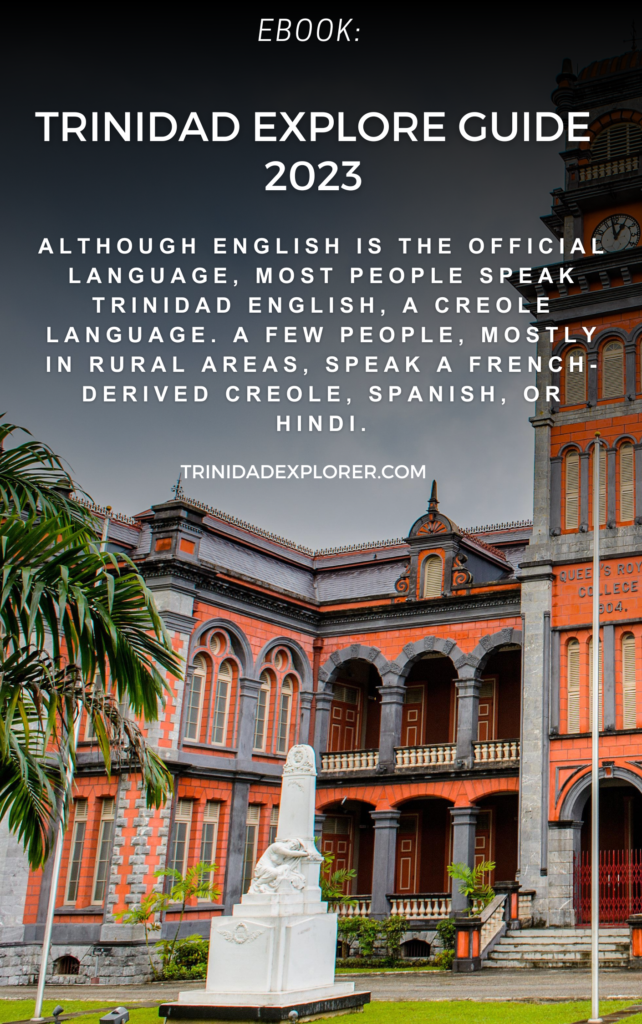
‘TRINIDAD TRAVEL GUIDE 2023’ An e-book to explore Trinidad, offering comprehensive information on history, geography, culture, must-see attractions, gastronomy, outdoor adventures, accommodation, transportation, and local tips. From details about the vibrant Carnival to tips for diving and hiking, this guide is essential for anyone seeking a rich and authentic travel experience in Trinidad, highlighting the island’s cultural diversity and natural beauty.

